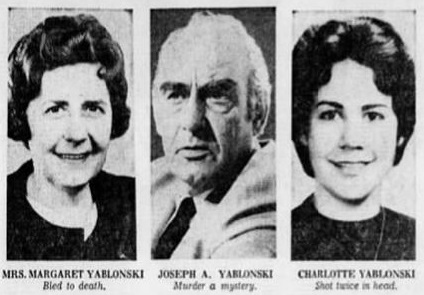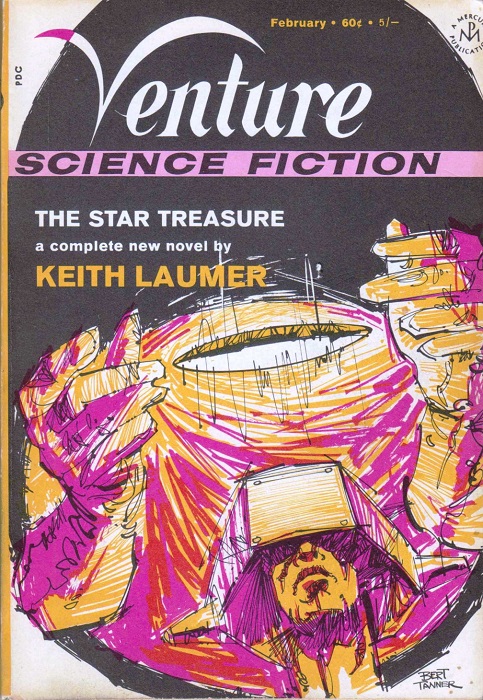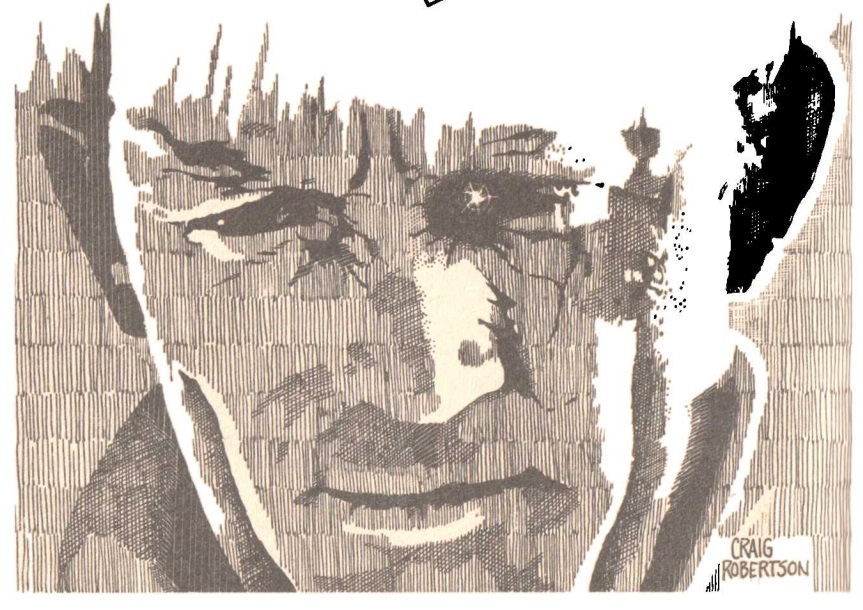
by David Levinson
A less perfect union
Unions have been a positive for workers. They’re why we have the 40-hour work week, overtime pay, paid time off, why blue collar workers are able to buy a house, not to mention not owing their soul to the company store; I’m old enough to remember when none of those things were a given. Of course, as human institutions, they are also flawed, and where money and power flows, those flaws can turn to worse things. That’s what gives many politicians—and the editor of a certain science fiction magazine—a pretext to rail against them.
One of the most important unions this century has been the United Mine Workers of America. Much of that stems from the four decades of leadership by John L. Lewis, who died last June. Lewis took a well-earned retirement in 1960 and was replaced by his vice president Thomas Kennedy. Old and in poor health, Kennedy was largely a caretaker and was soon followed by Lewis’ chosen successor, W.A. “Tough Tony” Boyle.
Lewis ran the UMWA with an iron fist, ignoring demands by the rank-and-file for a greater say in the union. He maintained his power through skill, charisma, and reputation. Boyle has run things with a similar style, but lacks most of what kept Lewis in charge. There’s even a feeling among the membership that he tends to favor the interests of the mine owners over the workers.
Enter Joseph “Jock” Yablonski. He was one of the leading figures in the opposition to Boyle’s policies. He had also been the president of the UMW’s District 5 until Boyle unilaterally stripped him of office in 1965. Last May, Yablonski announced he would challenge Boyle for the UMW presidency in the December election and was formally nominated in September. Boyle won the election on December 9th by an almost 2-to-1 margin, and Yablonski conceded. However after seeing the detailed election results, Yablonski promptly asked the Department of Labor to investigate the election. On the 18th, he also filed five civil lawsuits in federal court against the UMW over a variety of irregularities.
On January 5th, Yablonski’s older son, Kenneth, discovered the bodies of Yablonski, his wife Margaret, and their 25-year-old daughter Charlotte in their home in Clarksville, Pennsylvania. The next day 20,000 miners in West Virginia staged a one-day wildcat strike in protest against Tony Boyle, who they believe is responsible for the murders. Hours after the Yablonskis were buried, several of his supporters met with his attorney to plan further actions to reform the union.

As I write, the police have no leads. A $60,000 reward has been offered for information leading to an arrest and conviction. I don’t want to point any fingers without evidence, but an awful lot of people close to Yablonski are looking hard at Tony Boyle and the acrimony surrounding last month’s election.
Corrupt institutions
Most of this month’s Venture is given over to the new Keith Laumer novel, which spends quite a while with miners. But it and the other stories in the issue deal with corruption, both institutional and personal.
 A not very representational image for Laumer’s new story. Art by Bert Tanner
A not very representational image for Laumer’s new story. Art by Bert Tanner
The Star Treasure, by Keith Laumer
Lt. Ban Tarleton is the son of an admiral and a proud member of the United Planetary Navy. He firmly believes in the status quo and holds no truck with rebellious Hatenik philosophy. But a purge leads to his discovery of some unpleasant facts, eventually resulting in him being cashiered from the Navy and sentenced to permanent exile on a harsh Class I planet. There, he finds work as a miner and makes a discovery that may give him the power to bring the whole system down.
 Ban must use his best friend’s corpse as a trap. Art by Bert Tanner
Ban must use his best friend’s corpse as a trap. Art by Bert Tanner
Laumer is probably best known for his comedic stories, particularly those about the interstellar diplomat Retief, but he mostly writes serious stuff. Those tales come in two flavors: two-fisted adventure and thoughtful pieces that frequently tug at “masculine” emotions like duty and sacrifice. The Star Treasure is very much in the former category, but it also differs from Laumer’s usual approach.
Laumer’s typical adventure protagonist is an old-school Competent Man writ very large. Ban, on the other hand, blunders from episode to episode, generally succeeding through dumb luck. Laumer also tends to go wildly off the rails, often to the point of the surreal, investing his protagonists with incredible powers or giving them an alien background of which the were unaware. This one goes off the rails, too, but it’s right at the end. That usually happens around the mid-point. I guess this counterbalances The Seeds of Gonyl, where it happens on page one.
Three stars.
Breaking Point, by V.N. McIntyre
An ambitious but untalented colonel is captured and tortured by the enemy. There are a number of science-fictional elements.
 Looks more like Neil Diamond to me. Art by Craig Robertson
Looks more like Neil Diamond to me. Art by Craig Robertson
It’s hard to say much about this story without simply retelling it. There is one thing that kept me from liking it: The colonel has a cat, and the cat dies. Twice. I understand how it fits in the story, but it put me off completely.
Anyway, McIntyre seems to be new. I don’t know if that V. hides a Virginia or a Virgil and can’t make a guess based on the writing either. Either way, there are signs of some solid talent. More from this author would not be amiss—just leave the cats alone.
Objectively three stars, but only two from me for reasons already stated.
Disposal, by Ron Goulart
You probably don’t think about how much trash you and your family generate. Someone in the house takes the cans to the curb on the appointed day and brings back the empties once the truck has been by. What would happen if that didn’t happen? What if there wasn’t a nearby dump you could take the trash to yourself? Goulart asks those questions with a slight science-fictional twist.
Although the story takes place in Goulart’s old stomping grounds of San Francisco, I recall reading that he recently moved to New York City. It would have been after the great garbage strike of a couple years ago, but he may have been inspired by horror stories from the locals. His typical satirical style is fully in evidence, but he keeps the outright wackiness in check.
Three stars.
Standoff, by Robert Toomey
A human and an alien find themselves on opposite sides of an asteroid after their ships were destroyed in combat. Hostilities are extreme, and neither side takes prisoners. If they work together, the two might find a way for both to survive.
As the situation of the story became clear to me, I expected something like John Boorman’s 1968 film Hell in the Pacific (starring Lee Marvin and Toshiro Mifune). That might have been Toomey’s original inspiration, with a possible assist from the 1965 Frank Sinatra feature None But the Brave, but that’s not where the story goes. The ending might be darker than either of those films.
A high three stars.
Summing up
Elsewhere in the issue, we get a “super Feghoot,” which is twice the usual length at a full page. Unfortunately, the pun is extremely tortured, resulting in one of the worst Feghoots I’ve ever read. Meanwhile, Ron Goulart has finally found a book he likes. Two, in fact. One is a Doc Savage reprint, the other A Wilderness of Stars, an anthology edited by William F. Nolan. Most of the stories seem to be from the 1950s. I’m not to sure that Ron is all that keen on the modern state of science fiction, even the old fashioned stuff.
So, a rather middle-of-the-road issue. However, it’s dominated by the condensed novel, far more so than any of the previous issues. If we have to have a novel in every issue, let’s at least make it something shorter so we can have a couple more stories as well.
 Wellen’s written some good stuff, so I hope this more than the pot-boiler thriller it appears to be.
Wellen’s written some good stuff, so I hope this more than the pot-boiler thriller it appears to be.



